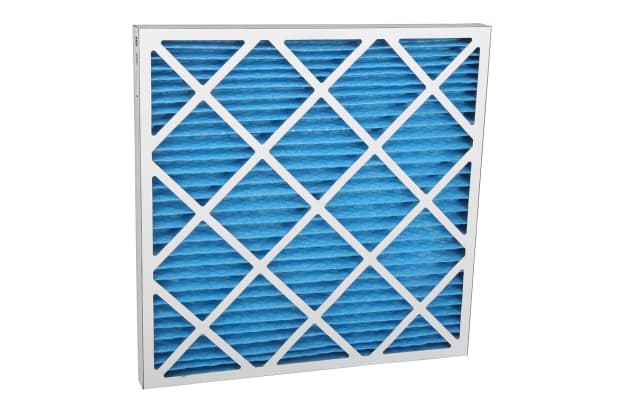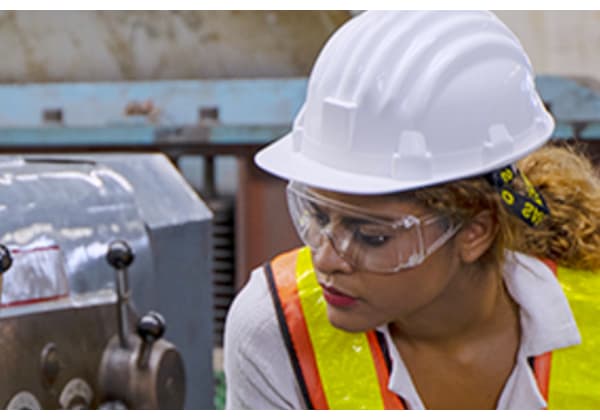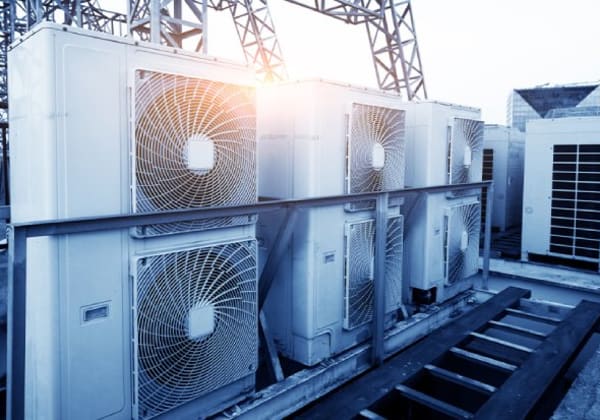- Published 13 Mar 2024
- Last Modified 13 Mar 2024
- 7 min
Advanced Food Packaging Technology
Food packaging enables the distribution and transportation of food, extends its shelf life, and ensures it is safe to consume. This guide looks at food packaging types (including smart packaging), examines the impact of food packaging on the environment, and looks at how sustainability may affect the design and manufacture of food and beverage packaging in the future.

Reviewed by David Carmichael, Solution Engineer (March 2024)
Food and beverage packaging technology plays a vital role in an industry that affects everyone on the planet. Without food packaging, it would be impossible to preserve food and it would be exposed to contamination. Food packaging enables the distribution and transportation of food, extends its shelf life, and ensures it is safe to consume.
Standard food packaging materials include cardboard, paper, plastic, metal, and glass. Advanced food packaging technologies include smart packaging and types of packaging for food that are good for the environment, such as edible packaging technology, which generates zero waste. This guide explores the challenges of packaging food and looks at advancements in food packaging and how they are benefiting the environment.
Food Packaging Challenges
Food packaging must protect and preserve food in the supply chain, at the point of sale, and in the home. Packaging should keep food at the correct temperature, be tamper-proof and leak-free, and provide space for detailed labelling about the product. If the packaging contains fruit or vegetables it may require vents. Packaging should be modular and stackable for easy storage during transport and on supermarket shelves.
One of the most important issues with packaging right now is food packaging sustainability. Sustainable food packaging is growing in importance as manufacturers look to reduce the number of single-use plastics used in protecting food. There is widespread concern in the media and among consumers about the contamination of seas, oceans, and rivers by single-use plastics, which principally come from the food industry. That’s not to mention the huge volume of plastic that ends up in landfill. Food producers are looking at new, sustainable food packaging to overcome these challenges.
The IoT and Food Packaging

The Internet of Things (IoT), and its manufacturing counterpart, the Industrial Internet of Things (IIoT), are overarching terms for the connection of physical objects to the internet. Connecting food packaging to the IoT is helping manufacturers improve food safety, enhance operations in the supply chain, monitor food packaging automation and production processes, and reduce waste.
For example, sensors or RFID tags can be connected to food packaging to track it across the supply chain. It’s possible to monitor the location and temperature of food in real-time, helping to ensure it is delivered in the correct condition. Sensors can be used to monitor food packaging automation processes, including parameters such as temperature and humidity. This can help to improve quality control and therefore food safety.
In the future, the IIoT will enable the food industry to develop ever more sophisticated and innovative food supply chains. It’s hoped that this will help cut down the huge amounts of food wasted each year. The IIoT is already helping minimise the risk of food-related outbreaks by ensuring the integrity of the food supply cold chain. (Learn about HVAC, fans & thermal management at RS.)
Smart Packaging
So, what is smart packaging? Smart packaging can track packaging using RFID tags or QR codes, which helps make the supply chain more efficient and inventory easier to manage correctly. Smart packaging technology can also help to control the environment and temperature. Because smart packaging can help make the supply chain more efficient, it can also reduce the carbon footprint of the product.
Smart Packaging Types
Types of smart packaging include active packaging and intelligent packaging. Active packaging can change environmental conditions such as moisture and temperature. Intelligent packaging monitors a product or package using codes or sensors to transmit data about the product, package, location, or all three. Intelligent packaging can provide information such as temperature data and where the product is in the supply chain, improving transparency and efficiency.
Smart Packaging Benefits
Food manufacturers are using smart packaging in increasing numbers. Smart packaging benefits include:
- Providing information about the supply chain
- Extending the life of food and drink products
- Improving the freshness of food
- Reducing waste
- Meeting compliance requirements
- Optimising logistics
Food Packaging and the Environment
Packaging waste contributes to climate change since single-use plastics are notorious for polluting oceans, rivers, and beaches. Producing plastic in itself generates carbon dioxide emissions. When plastic waste gets into the environment, it can harm wildlife and damage sensitive ecosystems. Recycling food packaging waste is important for preventing environmental damage and manufacturers are also looking at ways of reducing the amount of plastic used in the first place.
Sustainable Packaging
Sustainable packaging aims to minimise the impact of packaging on the environment. This can be done by using renewable energy in production or choosing recyclable or biodegradable materials. Packaging can also be made more sustainable by minimising the amount of material used, meaning there is an important role for clever packaging design.
Some manufacturers are experimenting with edible packaging (such as packaging made from seaweed), which eliminates waste entirely. Others are using bioplastics made from renewable materials such as cornstarch or sugar cane, rather than oil, natural gas, or other petrochemicals. Bioplastics are typically compostable or biodegradable but have the same functionality as traditional plastic packaging. Packaging designers may also focus on minimal packaging designs that reduce material and optimise space.
When it comes to beverages, manufacturers are moving away from single-use plastic packaging to reusable or refillable bottles. Manufacturers are also focusing on using readily recyclable materials like glass, aluminium, and PET plastic.
Modified Atmosphere Packaging
Meat, fish, poultry, and dairy products are often packaged in modified atmosphere packaging. Fruits and vegetables have appeared in this kind of packaging for decades. That’s because of the short shelf life of these products in the presence of oxygen.
Modified atmosphere food packaging technology creates a protective atmosphere around food. This atmosphere is composed of a dedicated gas or mixture of gases. Oxygen, nitrogen and carbon dioxide are often used. This type of packaging helps to preserve the taste of food for a longer duration when combined with low-temperature storage. It also helps to enhance the safety of food products, is inexpensive, and can be used with typical food manufacturer packaging automation.
3D-Printed Packaging
It’s not just industries such as defence, automotive, and aerospace that are making use of 3D printing technology. Food manufacturers are using 3D printing to create prototypes of new packaging designs. Some companies are using 3D printing to test sustainable materials, while others are also developing new types of smart packaging using 3D printers.
Ultimately, 3D printing may allow for the creation of new forms of packaging featuring intelligent components that are sensitive, non-toxic, biocompatible, and less expensive than food packaging types that use traditional manufacturing techniques. In fact, 3D printing could be an enabling technology in making smart packaging for food much more widespread than it is today.
The Future of Food Packaging
The desire among consumers for more sustainable options when it comes to food will continue to drive the development of sustainable food packaging in the future. One scenario might be the development of packaging-free stores, where consumers go with their own reusable packaging to pick goods up. Closed-loop recycling of packaging materials may also become the norm, and consumers may rely on durable, reusable packaging as a matter of course. Advancements in food packaging when it comes to bioplastics and edible packaging will help to reduce the cost and increase the take-up of these types of materials for packaging food.
Cost is also a factor when it comes to smart packaging systems, despite their benefits. For example, it is often economically difficult to justify packaging low-value items in smart packaging, a major barrier to its wider adoption. As smart packaging becomes more common, however, its cost is likely to come down. Innovations in the IoT and IIoT will also help to spread the technology more widely.
When it comes to food packaging, our choices matter. While plastic packaging has provided a cheap, ubiquitous, and safe means of packaging food, the current level of use of plastic is unsustainable. For the future of food packaging to be environmentally friendly, food manufacturers will need to innovate and adopt futuristic technology.
Learn more about avoiding contamination in the food and beverage sector with RS.


